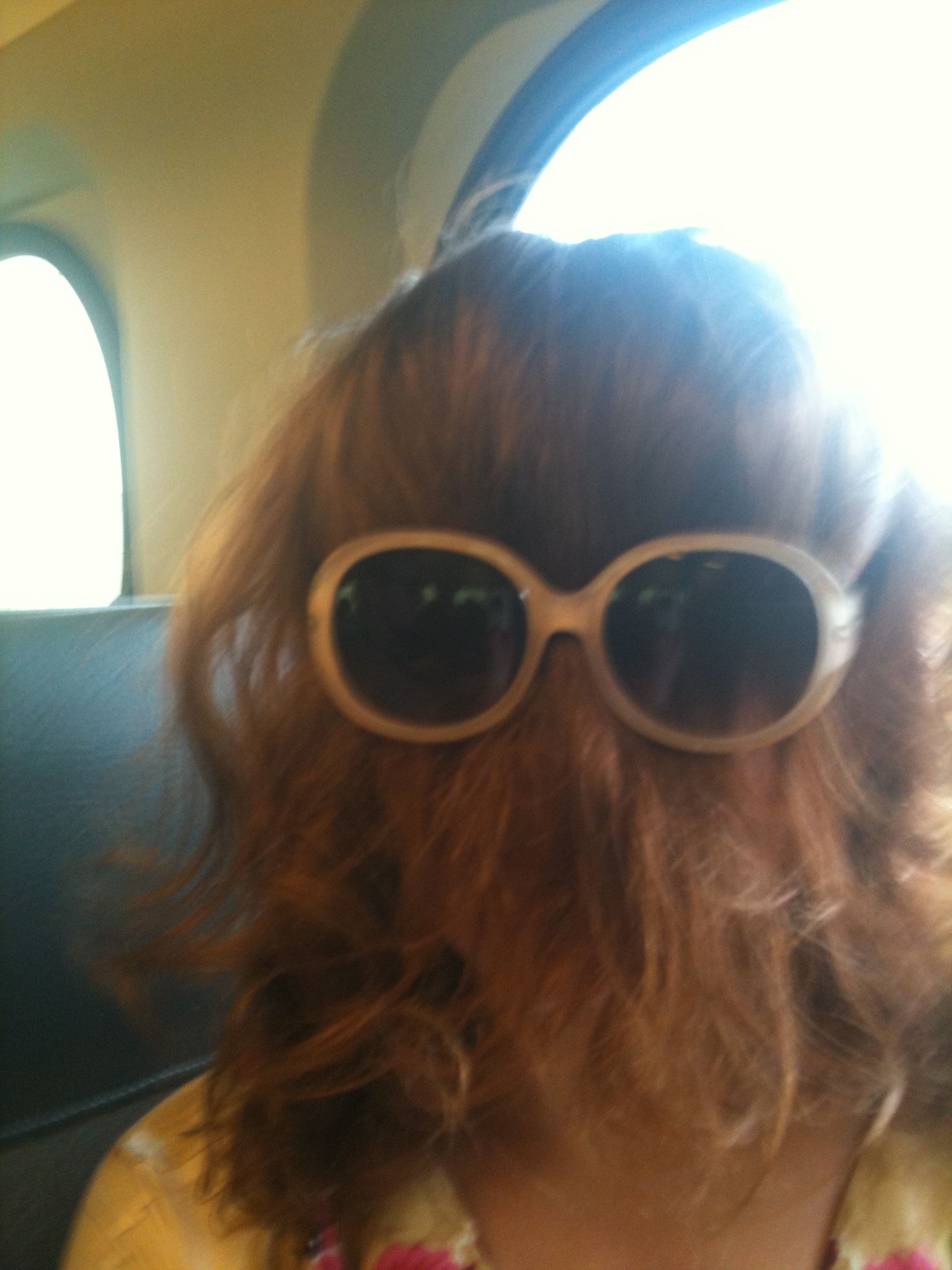
How I got Longer, Stronger, Thicker Hair—Naturally
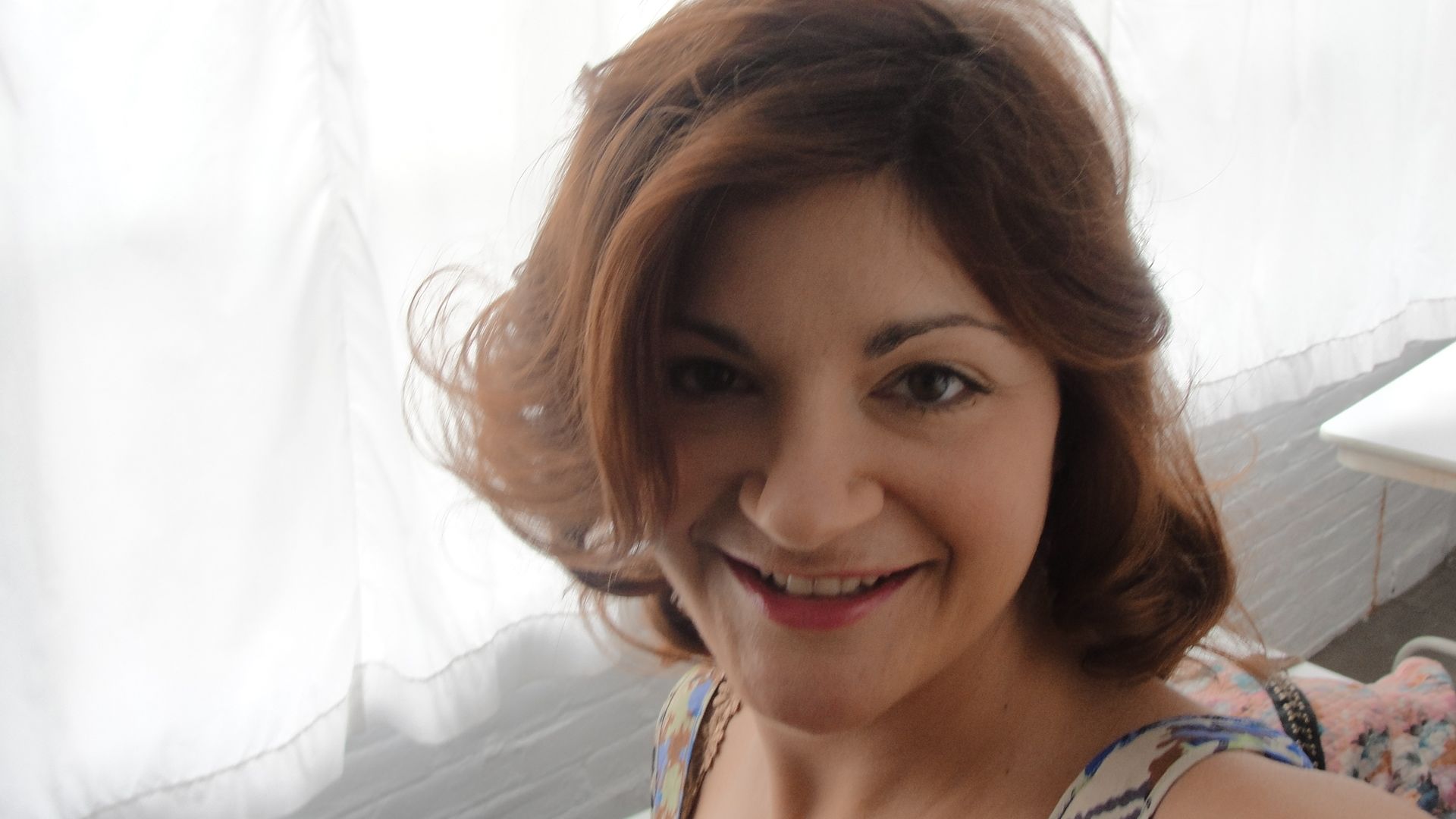 Me with shorter (straightened) hair because I couldn’t get it to grow.
Me with shorter (straightened) hair because I couldn’t get it to grow.
Hair is such a weird thing, isn’t it? It’s dead material that grows, it’s reactive to the environment (especially moisture), yet it feels alive. Even though we know hour hair isn’t a living thing, the cosmetics industry tells us that we can nourish it, strengthen it, and make it healthier. And while they usually overstate the case, you can actually change quite a bit about your hair depending on what you do to it—or, importantly, don’t do to it.
So: My problem was that after dying my naturally curly hair red for years (using Aveda’s supposedly more natural and gentle formula—which I later learned isn’t exactly the case), the ends kept breaking off, until it was just below my shoulders. Even for years after I quit dying it, and went with a supernatural color system from Europe, the same thing kept happening since my hair was so damaged. I was washing my hair with natural shampoos and conditioners several times a week (not every day) and blowdrying it straight maybe twice a month.
So, not a crazy routine, but not a super-gentle one either. I did deep conditioning treatments monthly. Still, breakage-city. 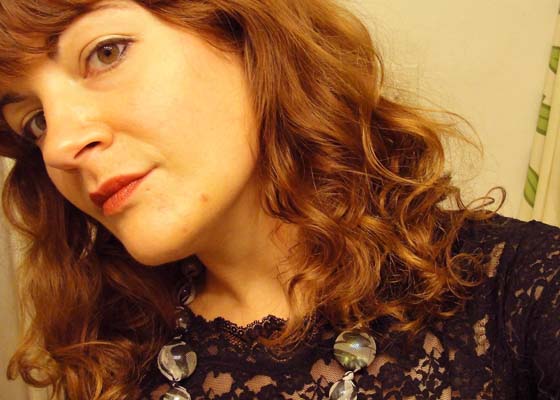 I could never seem to get it longer than this!
I could never seem to get it longer than this!
On top of not being able to grow my hair down my back the way I wanted to, I also had quite a bit of frizz and it looked either way too flat and thin (when I straightened it, so then I’d have to curl it again), or insanely bushy (when I didn’t). To top it all off, it seemed to actually be getting thinner all the way through; I thought maybe there was something off with my hormones or that this was a sign of aging. But I really, really wanted long, pretty, curly hair like I had when I was 17.
So I started to experiment, figuring I had nothing to lose—my hair was already in terrible shape. Here is what worked for my naturally curly, dryish, medium brown, relatively fine (but voluminous) hair over the past 2-plus years: 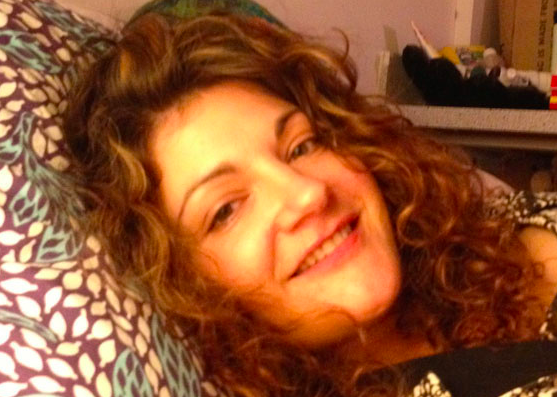 My hair, air-dried, with nothing in it—on a good day, a few months after I began my transition.
My hair, air-dried, with nothing in it—on a good day, a few months after I began my transition.
Not cutting my hair: I can hear the hair stylists screaming, but the truth is I just trim about a 1/2″ off the ends every couple months and that is it. People who cut hair for a living always, always cut off too much. Even if your ends aren’t perfect, you can work with them, unless they are just a total fried disaster. My hair doesn’t grow fast, so I need to keep as much length as I can, and people who cut hair always want to take off all the “dead” ends (which is understandable), but since I am rehabbing my hair, that meant they were always cutting off all the growing I had done. So, I do it myself, save money, and never get upset that my hair got cut too short—again.
Brush your hair: Those of us with curly hair are told never to brush it, because it becomes and frizzy crazy mess. This is true, but not entirely true at the same time. I have found that brushing is a great scalp stimulator, and hair cleaner—and it feels really, really good to brush my hair, which I take as a sign that I should do it. I give it a good brush every other night or so (definitely always for a full five minutes before I wash it); at least 100 strokes. After brushing but not washing, I simply add a bit of oil (see details on that below), dampen it down with water or a great natural spray (or make your own with essential oils and water), and re-curlify when I’m finished, or put it in a side braid, which flattens and waves it as it dries. I don’t know about superduper-curly hair, but my medium-curly locks bounce right back and my scalp is much healthier and happier than it used to be. I swear that the brushing has made my hair grow faster.
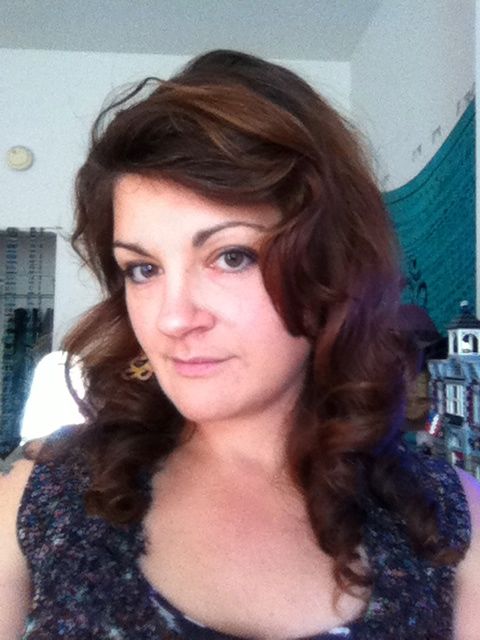 In 2013 in the midst of my new care routine, hair was finger-curled using oils in the ends here. It is noticeably thicker.
In 2013 in the midst of my new care routine, hair was finger-curled using oils in the ends here. It is noticeably thicker.
Stop shampooing: You’ve likely heard of the no-poo movement, and I’m a part of it. I “wash” my hair with conditioner once a week (a little more often in the summer or when I’m someplace hot), which means that I add a good-quality, natural conditioner—I like Alaffia—to my scalp and scrub away, as if I were using shampoo. I go for a good couple minutes on this step, really getting every part of my scalp clean and stimulated. I rinse and repeat, and leave about half the conditioner from that round in, or if I’m feeling dirtier, rinse that round out and then add some more conditioner that I don’t rinse. The less I wash, the less intensely curly it is.
Add natural oils: I can add oil to my hair every day when I style it (generally I don’t use much on the top 1/3 of my hair, just a tiny bit if necessary) and it just soaks it up, especially the ends. It also helps me style. I use straight-up organic coconut oil (I like Dr. Bronner’s because their plantations are closely monitored for worker’s rights) warmed up between my palms, or Dr. Hauschka’s Neem Oil. Sometimes I’ll even add oil twice a day!
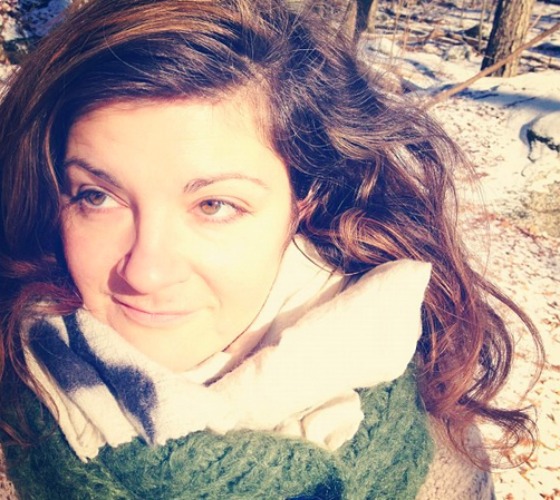 Current: From the front
Current: From the front
Treat with henna and natural masks: I loved having red hair, but as mentioned, the dyes were just too harsh for my locks. But I don’t love my natural color. Now I use Rainbow Henna in Mahogany and I love the color—I can even get it bulk in my food co-op so no plastic packaging waste, which is awesome. You can find henna in shades of red, as well as shades of black and brown. There’s also henna for blondes and, if you don’t want to deposit color on your hair, neutral henna. I mix mine up with hot water as per directions, and also add a half-avocado and a healthy tablespoon of organic olive oil. I leave it in for twice the recommended time. I also do an avocado and honey hair mask every so often (a great use for that extra uneaten half avocado!)
Braid before bedtime: My grandma told me my hair texture was very similar to her mother’s (my great-grandma); though her hair was much darker as she was Lebanese. My great-grandma, Melekie, would always brush her hair and braid it to one side at night, which I now do too. It keeps it from getting all ‘worked up’ as I call it. Piling it on top of your head can work too, if that is comfortable for you, but either way, your hair shouldn’t be rubbing all over the pillow and getting tossed around at night so that it requires lots more taming work in the morning.
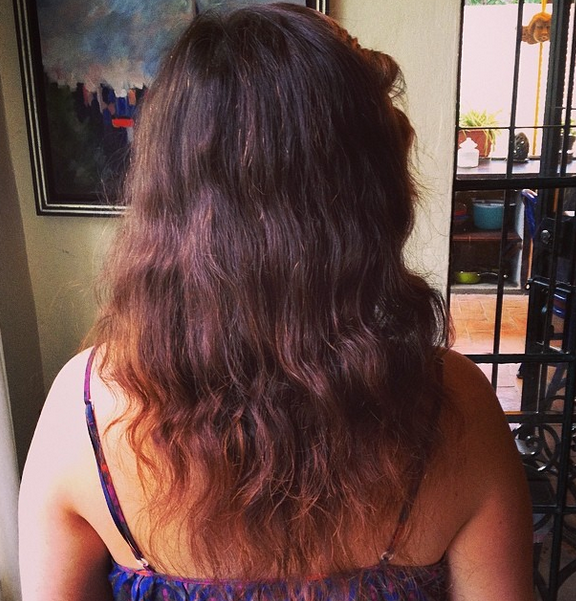 Current: From the back, post-braid and brushed out, unstyled to show length (Yes, it is still thinner at the ends, the remnants of years of abuse, but those ends are whole and not split; when I style them, I add a bit of oil and they look as in the previous image).
Current: From the back, post-braid and brushed out, unstyled to show length (Yes, it is still thinner at the ends, the remnants of years of abuse, but those ends are whole and not split; when I style them, I add a bit of oil and they look as in the previous image).
That’s my story! My hair is now down to my bra strap in the back, and keeps growing. My thicker hair breaks much, much less than before, and it’s almost not frizzy at all these days. I give it another year and I should have something pretty similar to my 17-year-old long curly hair.
If you have techniques that have worked for your hair, I’d love to hear about them in the comments section below! 